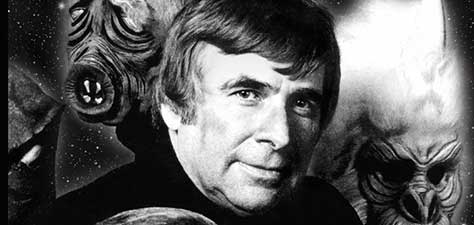
These Are the Voyages: Gene Roddenberry and Star Trek in the 1970s, Volume 1, from Jacobs/Brown Press, is the fourth installment in a heralded series of books about the development and legacy of Star Trek. This latest volume delivers surprising revelations concerning the decade-long fight to resurrect the series after its 1969 cancellation by NBC. A key part of the story is Gene Roddenberry’s struggles against studios and networks, which severely compromised his health.
“I was stunned as I went through those letters and memos,” said author Marc Cushman. “My heart went out to Gene Roddenberry. Despite Star Trek‘s remarkable popularity, Gene didn’t see any of his promised 25% profit participation. And, as he fought to bring Star Trek back, he was usually ignored or disrespected by those in charge.”
As the 1970s progressed, the show’s legions of fans fueled a Star Trek boom. Syndicated repeats of the episodes dominated their time slots in over 150 U.S. cities and in 70 foreign markets; merchandising hit unparalleled levels with the sales in the millions; and fan conventions attracted tens of thousands. An Associated Press reporter described one gathering as being like Beatlemania.
Cushman’s previous three books in his “These Are the Voyages” series cover Star Trek‘s creation and production in the 1960s. The narrative now continues into the 1970s, a defining era in the history of Star Trek, based on hundreds of interviews and a foundation of studio source materials, including thousands of documents from the Gene Roddenberry private archives, which, Cushman says, “contain every scrap of paper which Gene had ever written.”
Throughout the 1970s, as Paramount Pictures remained reluctant to resurrect the expensive series, other studios and networks attempted to replicate Trek‘s success. This led to Roddenberry’s 1970s TV films Genesis II, The Questor Tapes, Planet Earth, and Strange New World, all borrowing elements from Star Trek. Cushman discovered that all of the pilots were sold as series, with scripts written and production dates planned, yet internal disputes doomed each. “After numerous disagreements with the networks, Gene was either forced out or driven to quit,” Cushman reveals.
Star Trek finally returned with a mid-1970s Emmy-winning animated series, then 1979’s Star Trek – The Motion Picture. In between these milestones was “Phase II,” a planned Trek series for 1977, with all but one of the original cast members signed. Like Roddenberry’s other projects, scripts were written, sets built, and the first episode was weeks away from filming when the plug was suddenly pulled.
“Paramount delayed bringing Star Trek back for so long that, when they finally decided to make a movie, the executives demanded it be epic in both story and scope in order to meet growing expectations,” notes Cushman. “As a result, they rejected the scripts Roddenberry wrote, and shot down ideas from other Star Trek writers, one of whom pitched a story about the universe blowing up. The studio said it wasn’t big enough!”
As revealed by the thousands of documents in this new book, the true behind-the-scenes story of Roddenberry and his famous creation was far stranger than fiction … even by science-fiction standards. The late Leonard Nimoy called Cushman’s research “astounding.”
 Premier Pop C Pop Culture News – Movies, Comics, Television, Books, Toys, Games, and More
Premier Pop C Pop Culture News – Movies, Comics, Television, Books, Toys, Games, and More 

